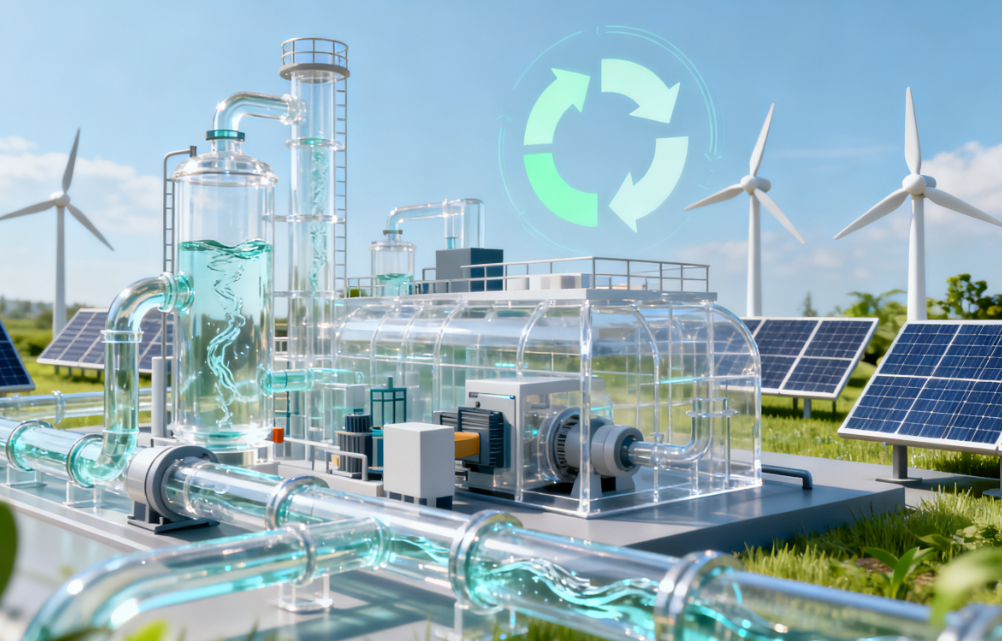The Role of Polysulfone in the Future of Sustainable Manufacturing
As the global manufacturing landscape undergoes a sustainability revolution, materials once valued solely for their mechanical strength or chemical resistance are now being re-evaluated through an environmental lens. Polysulfone (PSU) — a high-performance thermoplastic known for its exceptional thermal stability, strength, and chemical resistance — is emerging as a key enabler of greener, more sustainable industrial production.
In the coming decade, polysulfone will not only continue to power high-tech sectors such as medical devices and electronics but will also redefine how manufacturers think about durability, reusability, and resource efficiency.

1. Understanding the Sustainability Potential of Polysulfone
Unlike many conventional plastics that degrade under repeated stress or sterilization, polysulfone offers long-term performance and extended service life, reducing the need for frequent replacements and minimizing waste. Its superior heat resistance (up to 180°C) and resistance to hydrolysis make it ideal for reusable components in manufacturing and laboratory environments.
From a sustainability perspective, this durability translates into tangible benefits:
Fewer replacements = less material waste
Longer lifespan = reduced carbon footprint per unit
Stable performance under harsh conditions = fewer production defects
Manufacturers aiming for circular-economy models are increasingly recognizing that a longer-lived material like PSU aligns perfectly with resource optimization and energy efficiency.
2. Driving Cleaner Manufacturing Through Reusability
In applications such as filtration systems, medical device housings, and industrial process components, polysulfone enables repeated sterilization and reuse — a major shift away from the single-use culture that has dominated industrial and healthcare operations for decades.
This reusability helps companies reduce plastic consumption and lower costs while meeting stricter environmental regulations. For example:
In pharmaceutical manufacturing, PSU filters can be sterilized multiple times, replacing disposable alternatives.
In food and beverage processing, PSU piping and fittings maintain hygiene without requiring frequent disposal.
In automotive testing, PSU’s chemical resistance extends component lifespan under exposure to lubricants and fuels.
Each of these cases highlights polysulfone’s role in achieving both economic and environmental efficiency.
3. Advanced Recycling and Recovery Initiatives
One of the most exciting areas of innovation involves closed-loop recycling systems for high-performance thermoplastics. Polysulfone, due to its stable polymer backbone, can be recovered and repurposed under controlled chemical processes without severe degradation in performance.
Research teams are developing solvent-based recovery and polymer upcycling methods that could allow PSU to be remanufactured into new high-grade applications — marking a shift toward truly sustainable engineering polymers.
Moreover, companies that utilize PSU are beginning to integrate traceability and lifecycle data tracking into their production systems, ensuring that every component has a measurable sustainability footprint.
4. Replacing Metals and Energy-Intensive Materials
A major sustainability challenge in modern manufacturing is reducing dependence on metals and ceramics, which require energy-intensive mining and smelting. Polysulfone is increasingly being adopted as a lightweight alternative, offering comparable mechanical strength but with:
Lower production energy requirements
Reduced part weight (saving energy in transport and operation)
Simplified end-of-life recycling options
In the aerospace, electronics, and renewable energy sectors, polysulfone’s ability to replace metal components without compromising performance positions it as a critical player in low-emission manufacturing strategies.
5. The Intersection of Innovation and Environmental Policy
Global regulatory trends — from the EU’s Green Deal to China’s “Dual Carbon” strategy — are driving industries to evaluate material sustainability from cradle to grave. Manufacturers that adopt polysulfone early are better equipped to meet upcoming environmental compliance standards related to product durability, reusability, and recyclability.
In addition, the growing availability of bio-based polysulfone precursors offers new avenues for greener production. These next-generation PSU grades maintain the same high performance while reducing reliance on petroleum-derived feedstocks, aligning with global decarbonization goals.
6. Challenges and the Path Forward
While the sustainability potential of polysulfone is clear, challenges remain:
Recycling infrastructure for high-temperature plastics is still developing.
Material cost can be higher than commodity polymers, though lifecycle analysis often justifies the investment.
Supply chain transparency — particularly in resin sourcing — must improve to ensure true environmental accountability.
Nevertheless, with strong R&D investment and cross-industry collaboration, polysulfone’s role in sustainable manufacturing will only continue to expand.
7. The Future of Sustainable Manufacturing with Polysulfone
As industries move toward circularity and carbon neutrality, polysulfone will increasingly act as the bridge between high performance and environmental responsibility. Its durability, reusability, and recyclability potential make it a cornerstone material in the transition toward sustainable production models.
Manufacturers who leverage PSU’s full potential today will gain a strategic advantage in tomorrow’s competitive, sustainability-driven economy.
Conclusion
Polysulfone represents far more than a high-performance engineering plastic — it’s a foundation for a new era of sustainable manufacturing, one defined by longer product lifecycles, efficient resource use, and reduced environmental impact.
For companies seeking to integrate sustainable materials into advanced production systems, SL Tec provides customized polysulfone solutions designed to meet environmental and performance goals — empowering industries to build a cleaner, smarter, and more efficient future.














